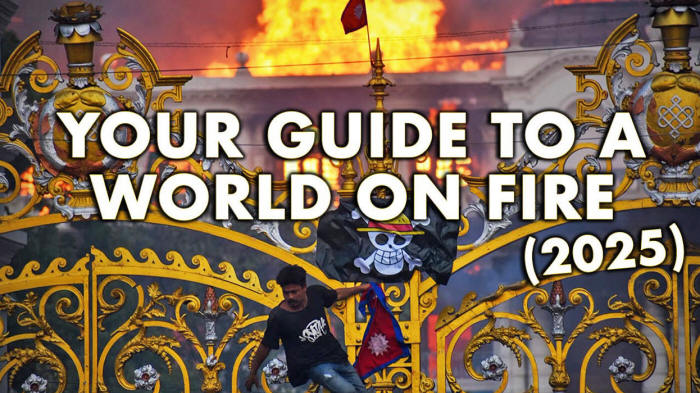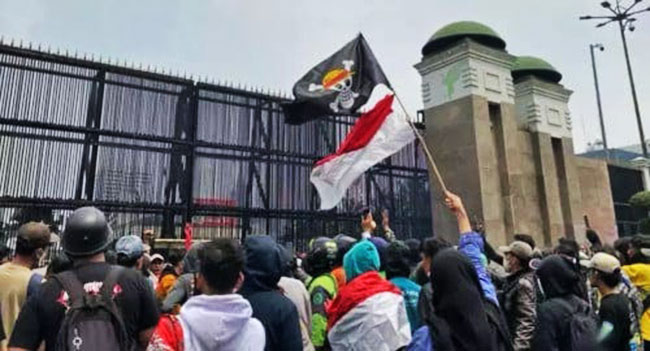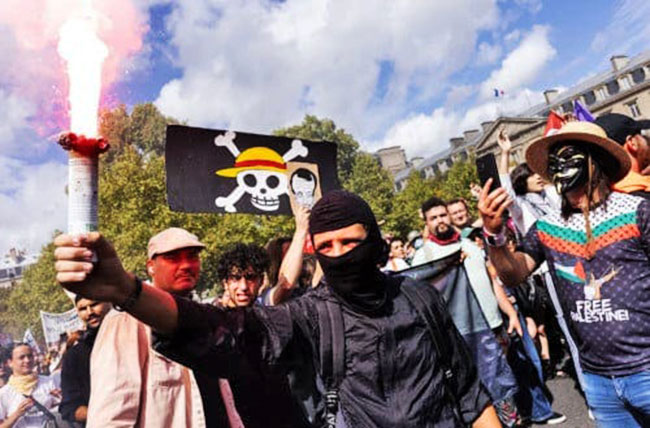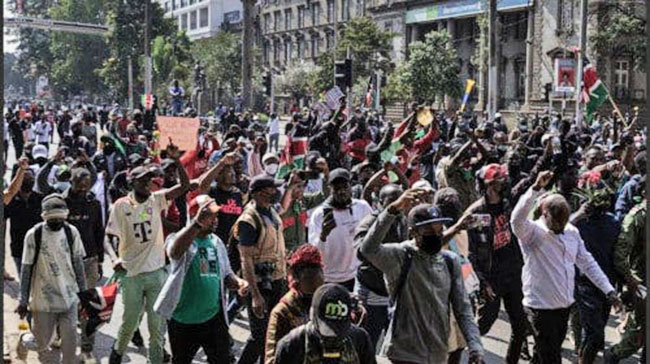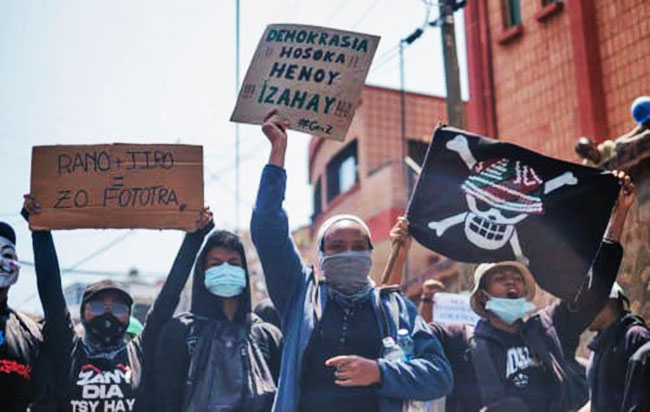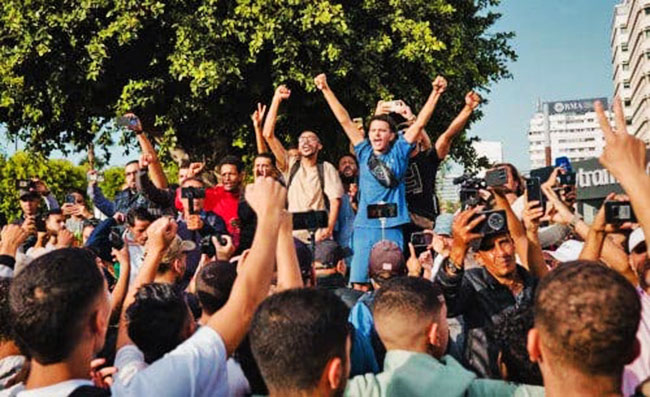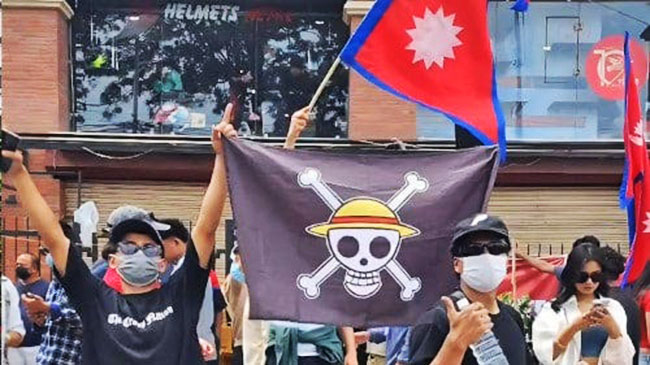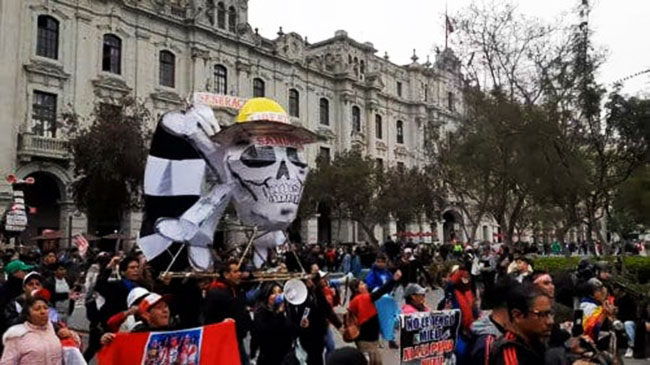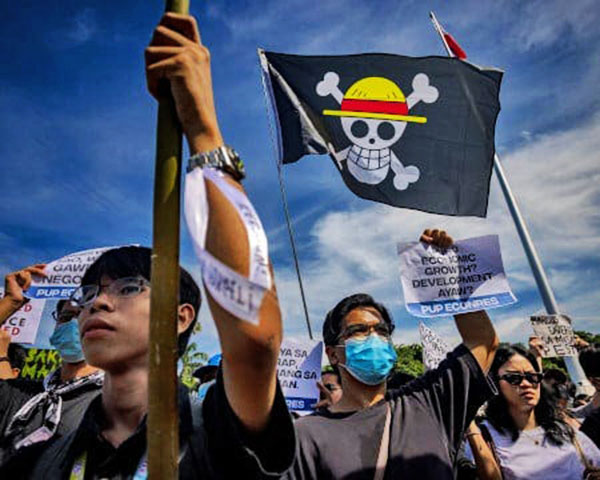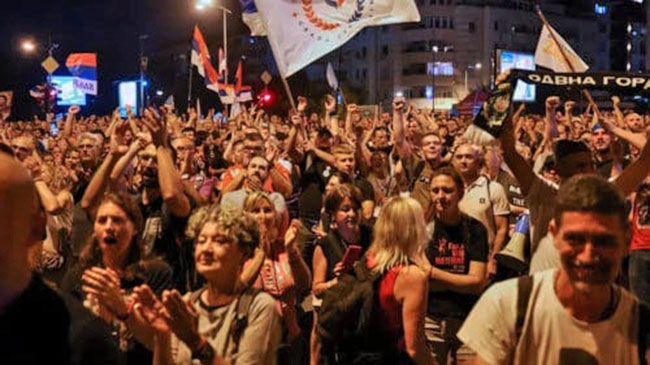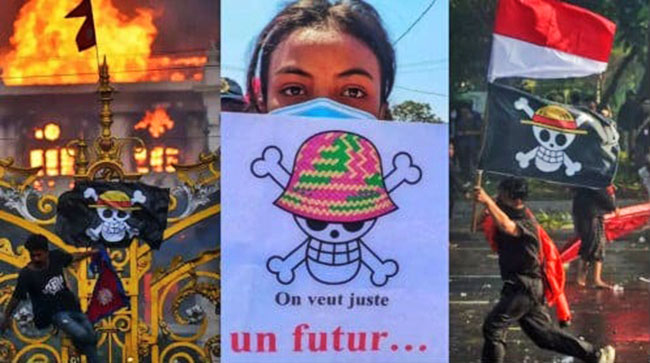|
by James Corbett
Identified as "Gen Z Protests," these youth uprisings have been
sweeping the world in recent months, from Madagascar to Peru to the
Philippines to Nepal to Indonesia.
After noting this worldwide protest phenomenon in a recent edition of New World Next Week, I made reference to my 2019 article, "Your Guide to a World on Fire" - also HERE.
Then, lo and behold, I received this comment from Corbett Report member angie.j:
Thanks for asking, Angie!
There wasn't such a follow-up when you posted that comment, but your wish is my command, so here we go!
INDONESIA
On August 25, a student protest demanding the dissolution of the Indonesian parliament quickly spread around the country, leading to multiple clashes between protesters and police.
The protests turned deadly on August 28, when an armored police vehicle hit and killed Affan Kurniawan, a 21-year-old motorcycle delivery driver who hadn't even been taking part in the demonstrations.
This incident led to even greater protests and, eventually, to thousands of arrests as police and military clashed with rioters across Indonesia.
The unrest in Indonesia is the culmination of months of mounting public ire against the government in Jakarta.
President Prabowo Subianto - a military goon from the Suharto era who has experience with kidnapping and harassing democratic protesters - came to office a year ago promising to end government corruption, boost national self-reliance, and raise economic growth eight percent in the next five years.
Instead, Indonesians got a "free" school lunch program that has cost taxpayers $10 billion per year and has resulted in,
Now the government is cracking down on the social media outlets it believes fomented the unrest in the first place.
FRANCE
In scenes reminiscent of the gilets jaunes movement that was featured in my original World on Fire article in 2019, protesters took to the streets across France last month, blocking traffic, burning barricades and generally causing havoc.
The demonstrations were part of the "Bloquons Tous" movement, a radical new youth-led, social media-born campaign aiming to shut down the country in defiance of rising inequality and proposed government spending cuts.
The protest took place on incoming Prime Minister Sebastien Lecornu's first day in office and prompted the government to deploy more than 80,000 security personnel across the country.
Hundreds of demonstrators were arrested...
KENYA
The Summer of Strife arguably kicked off in Nairobi, where anger over high youth unemployment, high cost of living, and rampant corruption and police brutality culminated in mass rallies, mass arrests, and, inevitably, violent clashes with the police.
Dozens were killed, over a hundred injured and some five hundred arrested as police finally resorted to firing live rounds into the crowd.
The latest carnage in the country came around the first anniversary of similarly dramatic demonstrations last year, when Kenyans took to the streets in opposition to proposed new taxes on staple items like bread, cooking oil and diapers.
Those rallies resulted in the Kenyan parliament being set on fire while angry marchers shouted "We're coming for every politician!" and frightened lawmakers fled the burning building through a tunnel.
The proposed tax hikes were eventually withdrawn, but discontent among Kenya's youth has not abated.
Rising costs of living combined with mass youth unemployment and the government's vicious extrajudicial killings of activists continue to feed the flames of anger among the Gen Z protesters.
In response, the government has predictably blamed the unrest on,
...and has attempted to clamp down on social media.
MADAGASCAR
Protests against the unpopular government of President Andry Rajoelina swept across Madagascar in late September.
Led by a group calling itself "Gen Z Madagascar," the demonstrations began after a series of water and electricity outages sparked mass discontent, but they quickly snowballed into general anti-government anger.
After weeks of disruption, including ransacked shops and vandalism of politicians' homes, the embattled Rajoelina - who first came to power in a 2009 military coup - was forced to dissolve the government, appoint a new prime minister and offer to engage in talks with protest leaders.
Still, this has not been enough to satisfy the public at large.
As of press time, protesters are now demanding that Rajoelina resign from office this week.
MOROCCO
In Morocco, a group calling itself "Gen Z 212" has revolted in opposition to widespread government corruption and a perceived lack of support for education and health care.
The movement crystallized last month after eight pregnant women all died following caesarean section at a public hospital in Agadir.
Their deaths spurred an initial round of demonstrations in several cities throughout Morocco, with a fed-up population denouncing the state of the country's public health system.
Amine Tahraoui, the country's health minister, responded by dismissing several senior health officials and contractors, but his move was not enough to quell the dissent.
Then, when the government's heavy-handed response to the protests led to the death of two Moroccan youth, that seemed to be the final straw for the country's disgruntled Gen Zers.
Protesters are now openly calling for Prime Minister Aziz Akhannouch's resignation, with cries of "Akhannouch, out!" now regularly filling the streets of Casablanca.
NEPAL
As James Evan Pilato and I covered on New World Next Week last month, the Gen Z revolution has reached the shores of Nepal, as well.
In the span of a few startling days in September, a protest against a social media ban in the country spiraled into outright revolution.
The chaos was, of course, not just about a social media ban.
It was a reflection of the public's rage over rampant corruption in the Nepalese government and over the "nepo kids" - the rich and pampered offspring of the country's political establishment - dominating Nepal's political and social life.
What happened next surprised everyone in Nepal - even the protesters themselves.
The real shock was how Karki was selected:
Unlike the uprisings in many of the other countries on this list, the one in Nepal quieted down after Karki's appointment.
PERU
Peru's protests kicked off on September 20 after the introduction of a deeply unpopular pension reform bill.
But, as in so many other countries in recent months, the pension issue was only the spark that ignited a powder keg of public discontent over government corruption, violent crime and economic insecurity.
Since the initial protests, a series of strikes, marches and demonstrations have been growing in size and popularity.
Early on, youth-dominated marches flooded the streets of Lima with anti-government resisters, but they have since been joined by the country's miners - who succeeded in shutting down one of the country's key mills - and the country's transport workers - who managed to bring economic activity to a standstill with a general transport strike.
As of press time, the protest movement seems to have succeeded in one of its primary aims:
PHILIPPINES
Filipinos took to the streets by the tens of thousands late last month after it came to light that billions of dollars of public funds slated for flood control projects had been lost through government corruption.
Officials in charge of the projects were found to have been taking kickbacks from contractors in exchange for government contracts, and a number of projects that had already been publicly funded never materialized at all.
So far the demonstrations have resulted in mass arrests.
General Romeo Brawner, the chief of staff of the Philippine Armed Forces, confirmed in a recent press conference that,
...but he insists those calls have been rejected and there is no coup in the offing.
Anticorruption marches are set to take place every Friday for the next two months, and a nationwide rally is scheduled for November 30.
SERBIA
In November 2024, the canopy of the newly renovated Novi Sad train station collapsed, killing 16 people, including three children.
In another country, this might have just been written off as a sad and senseless tragedy, but in Serbia, the question of how such an event could have happened was not difficult to answer:
The Novi Sad incident prompted an investigation by the government that led to the indictment of thirteen officials for "irregular execution of construction work," including the country's construction minister, Goran Vesic.
But the criminal indictment was not enough to staunch public ire over the endemic corruption in the country. Incensed by the fact that the Novi Sad indictment did not include any examination into allegations of financial grift, university student-led street protests erupted on almost a daily basis.
The movement has - by embattled Serbian President Aleksandar Vucic's own count - resulted in "23,000 unregistered gatherings" in the past nine months.
What started as street marches against corruption is now a full-on revolutionary movement, with blockades, street battles between protesters and police, and accusations of police brutality.
The students leading the protest claim their goal is nothing less than the overthrow of Vucic's government...
THE BOTTOM LINE
Have you noticed any common thread connecting these various protest movements kicking off around the world?
I mean, besides the lamestream media's shameless deployment of the generational psyop in their incessant labeling of the "Gen Z protesters",
You may have also noticed a ubiquitous symbol that is apparently "spontaneously" showing up at these rallies:
For those (like myself) who are decidedly not interested in Japanese comic books and cartoons,
The symbol of this plucky band of would-be liberators is, apparently, a Jolly Roger flag in which the skull is wearing the gang's trademark straw hat.
So,
Good question...!
According to the various think pieces on the subject that are now flying out of the dinosaur media's rinse-and-repeat article-generation factory, the explanation is simple:
At the same time,
...and (these same talking heads insist) it is no different from the Guy Fawkes mask that became the symbol for Millennial protesters in the Occupy Wall Street era...
Well, that settles that then!
Of course, those who are familiar with the history of the cookie-cutter mass-manufactured protest movements known as "color revolutions" - in which protesters all "spontaneously" decide to sport the same colour at their marches and rallies to create a type of branding for a "spontaneous" people's uprising - might know better.
If you've followed the thread of the "colour revolution" plot (commencing in Serbia in the 1990s with the Otpor! protests and continuing to spread through Ukraine, Georgia and other geopolitically-sensitive hotspots in the 2000s), you'll know the shady, NGO funding behind such plots. It doesn't take an analytical genius to suspect that there may be similar forces behind the "spontaneous adoption" of this particular symbol by such disparate "Gen Z" protest movements around the world.
Still, it is far too politically naive to say that every protest movement that happens is a synthetic phenomenon, spun out of whole cloth by shadowy forces.
While protest movements certainly can be organized and steered by nefarious actors, large rallies and marches do not materialize out of the ether because of dollars and deep state wishes alone:
It isn't difficult to see why young people around the world would be fed up with the status quo in their respective countries.
Government corruption is endemic.
Combine those troubles with a world in which the future is increasingly set to be dominated by robots, drones and other AI-powered automatons and it isn't hard to understand why young people feel they have nothing to gain from going along to get along in this rigged and failing system.
Ultimately, I think the unrest we are seeing right now is the inevitable result of the "Chaos Out of Order" (also HERE) strategy I've identified in the past.
The New World Order can't be ushered in until the Old World Order has been swept out, so the disintegration of society is in fact a necessary part of this transitional moment.
It shouldn't be surprising that young people just beginning to make their way in the world are sensing this collapse and fighting against a system they see collapsing all around them.
Given the momentum of these worldwide protest movements, though, we are left in a similar position to where we were in 2019, when I penned my first "World on Fire" article.
If you'll recall, at that time I was left to speculate that the protest movements arising in so many places around the world meant that something big was about to be unleashed on the world... and a few months later we were plunged into the scamdemic...
Does this mean we're being primed for something equally world-altering in the coming months...?
|


